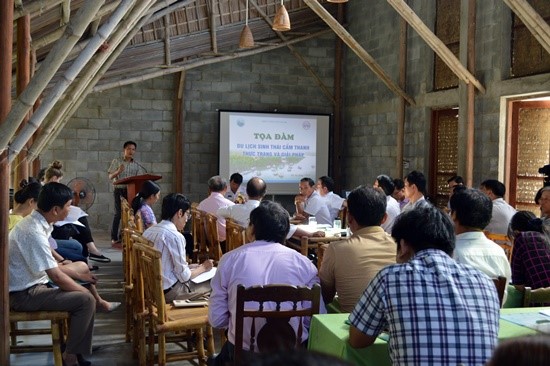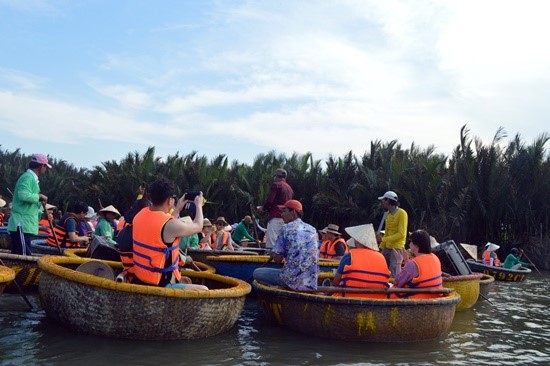A seminar on Cam Thanh eco-tourism development has just been organized by the People’s Committee of Hoi An city, the Management Board of Cham Islands – Hoi An World Biosphere Reserve, and Cam Thanh Commune. The event was part of the activities celebrating the 9th Anniversary of UNESCO's recognition of Cham Islands - Hoi An as the World Biosphere Reserve (26 May, 2009 – 26 May, 2018).

Scene of the seminar
The biosphere reserve is divided into three functional areas: the core area - Cham Islands marine protected area, the buffer area - mainly in Thu Bon estuary area including Cam Thanh nipa forest, and the transition area - Hoi An ancient town World Cultural Heritage to fulfil three basic functions of a World Biosphere Reserve: conservation, support and development.
Cam Thanh nipa forest plays an important role in controlling the quality of the environment, minimizing the bad impacts of the river basin and oceans due to climate change, maintaining the connection of ecology and population between Cham Islands and the Thu Bon estuary.
Cam Thanh has a great advantage in eco-tourism development, based on the conservation and sustainable development of the nipa forest and other related resources. In recent years, the number of tourists to Cam Thanh has increased. For the first 6 months of 2018, Cam Thanh welcomed over 300,000 visitors.

Numerous tourists to Cam Thanh nipa forest
However, this increase can put the nipa forest at risk and be a great challenge facing the development of eco-tourism and socio-economy in Cam Thanh commune as well as in Hoi An city.
In addition, the speed of urbanization and constructionalization in Cam Thanh has recently had negative impacts on the environmental quality, landscapes, the ecosystem health of the nipa forest, and biodiversity. It has even changed the local traditional culture here.
The seminar was an opportunity for the stakeholders to evaluate, analyze and find solutions to the current problems of Cam Thanh tourism.